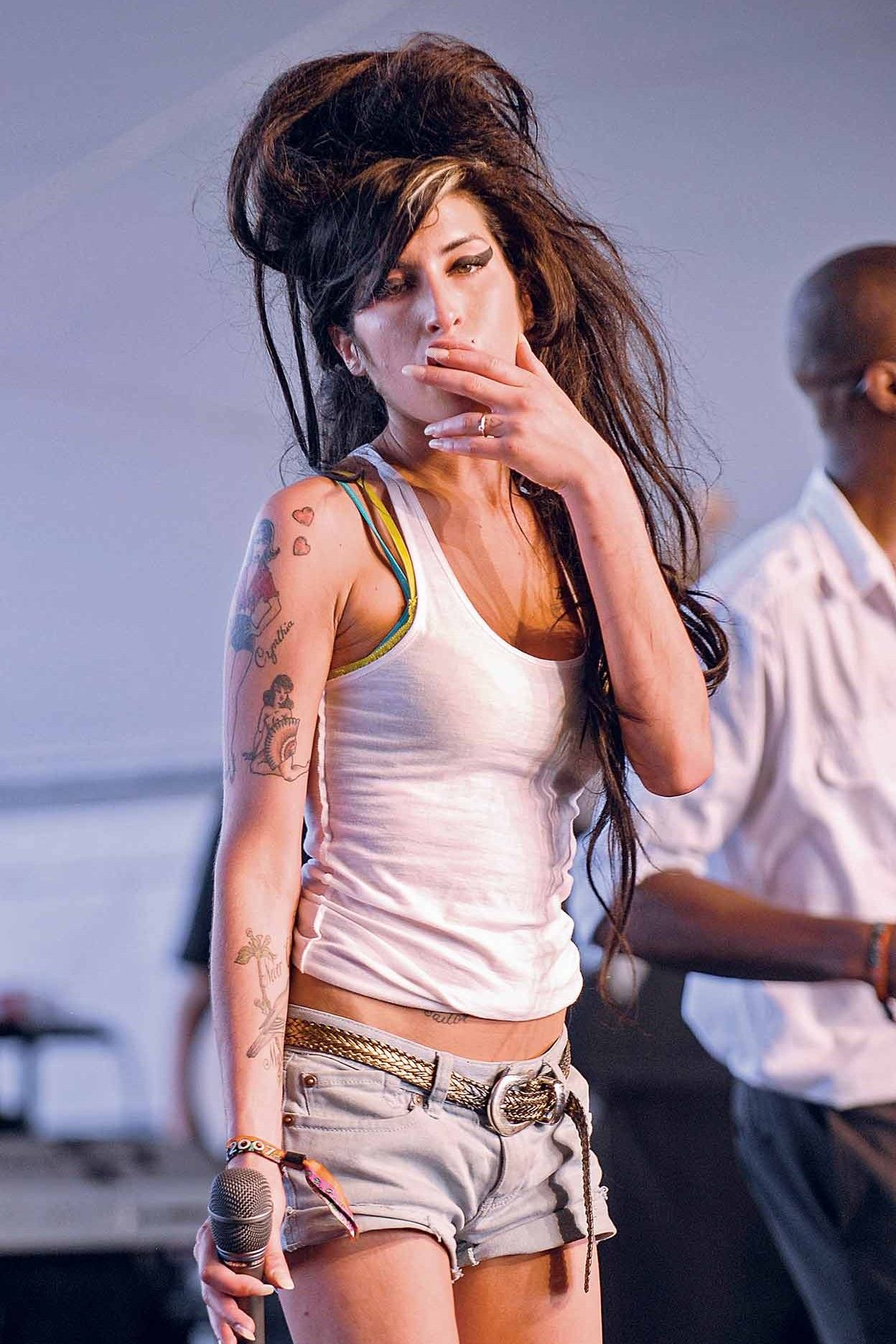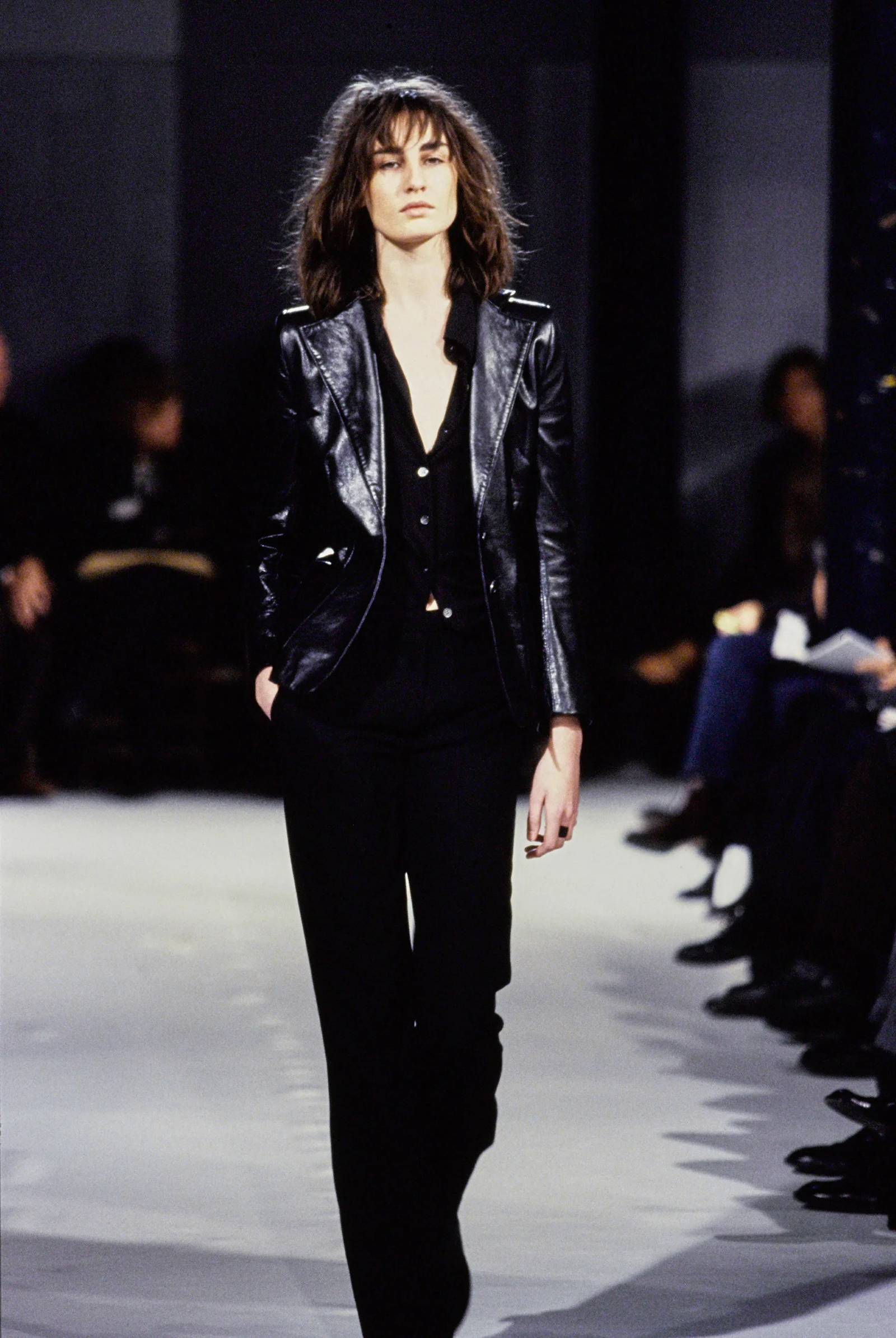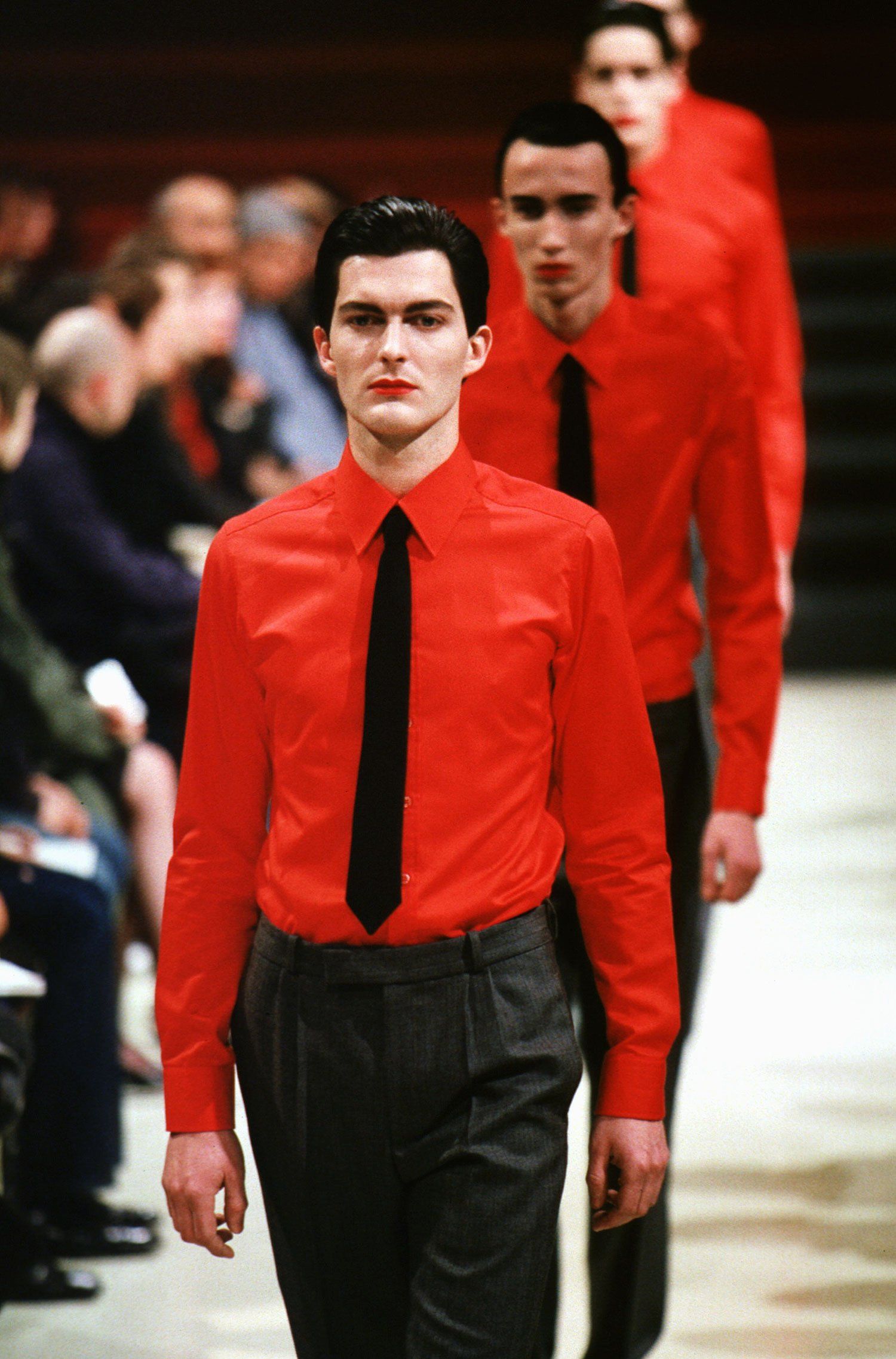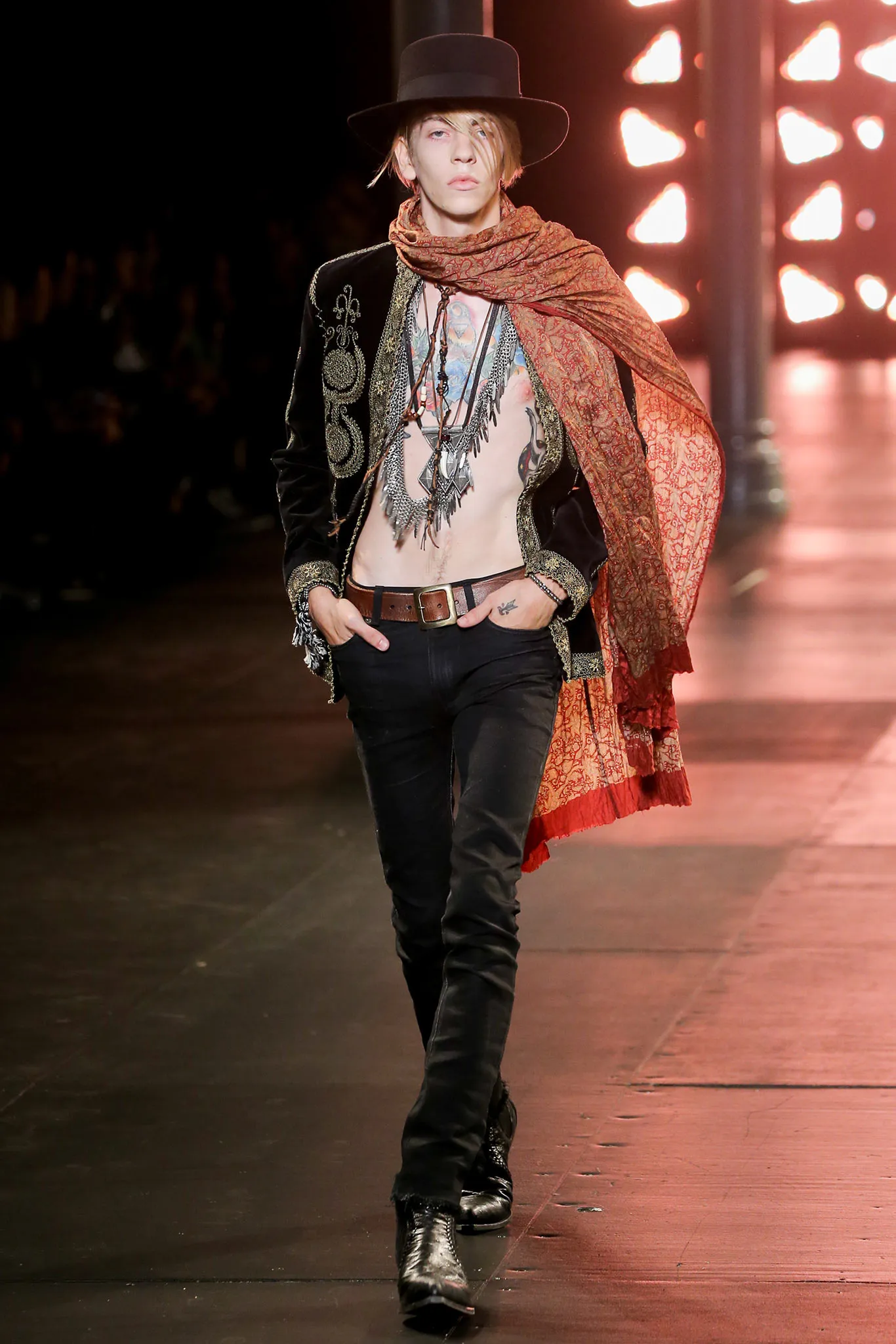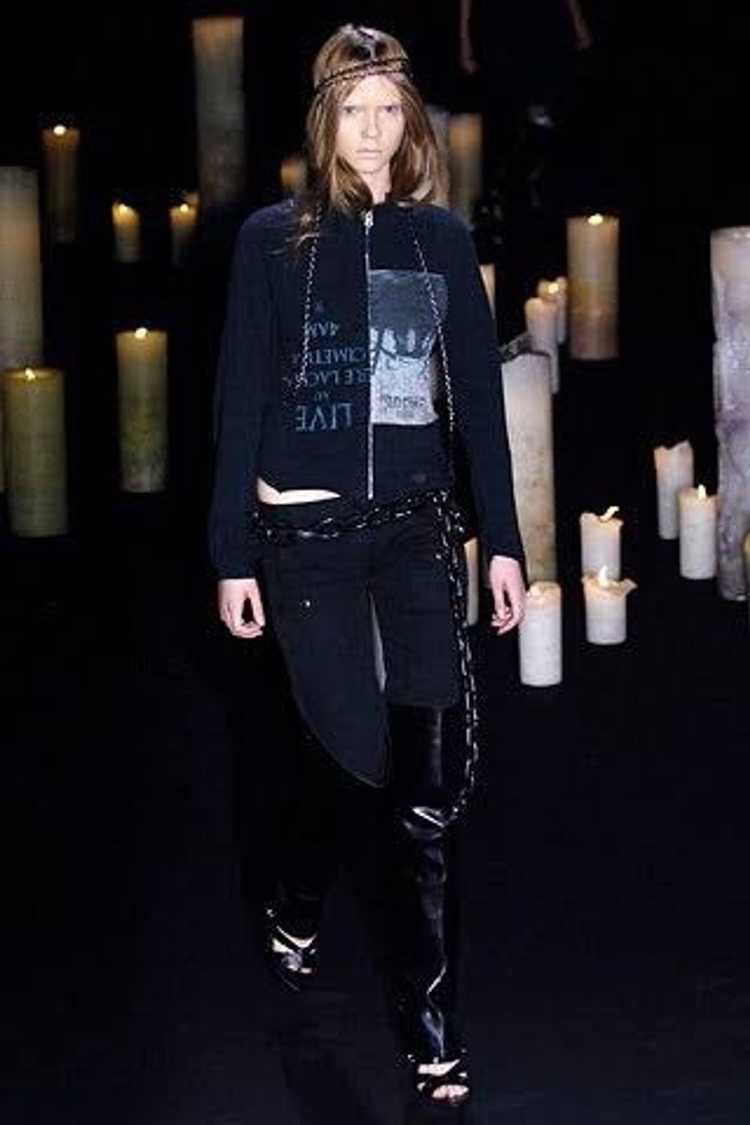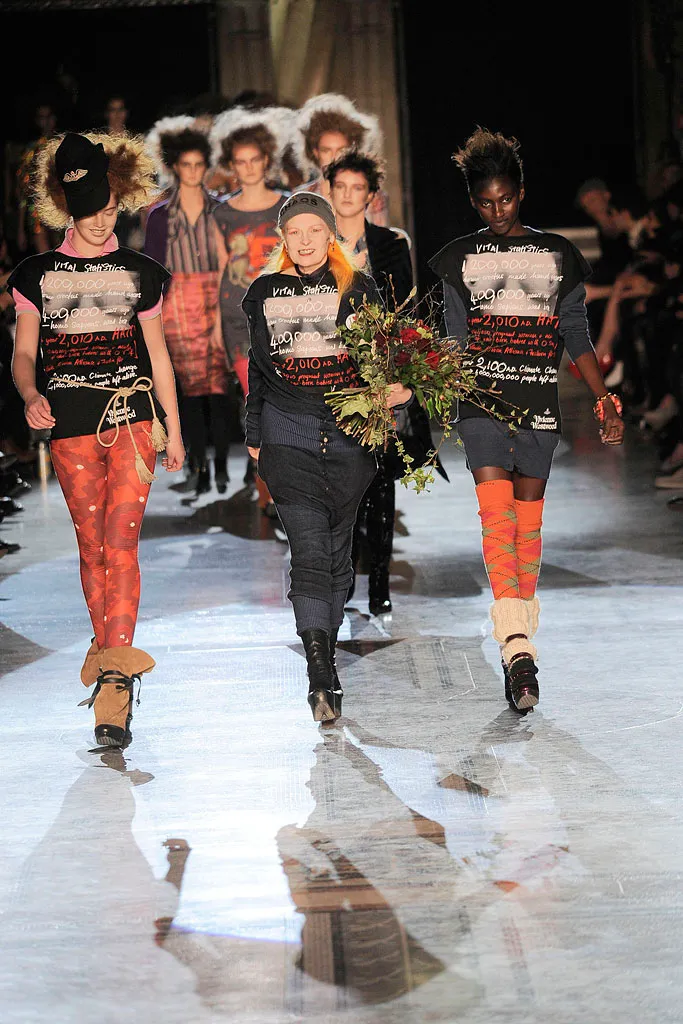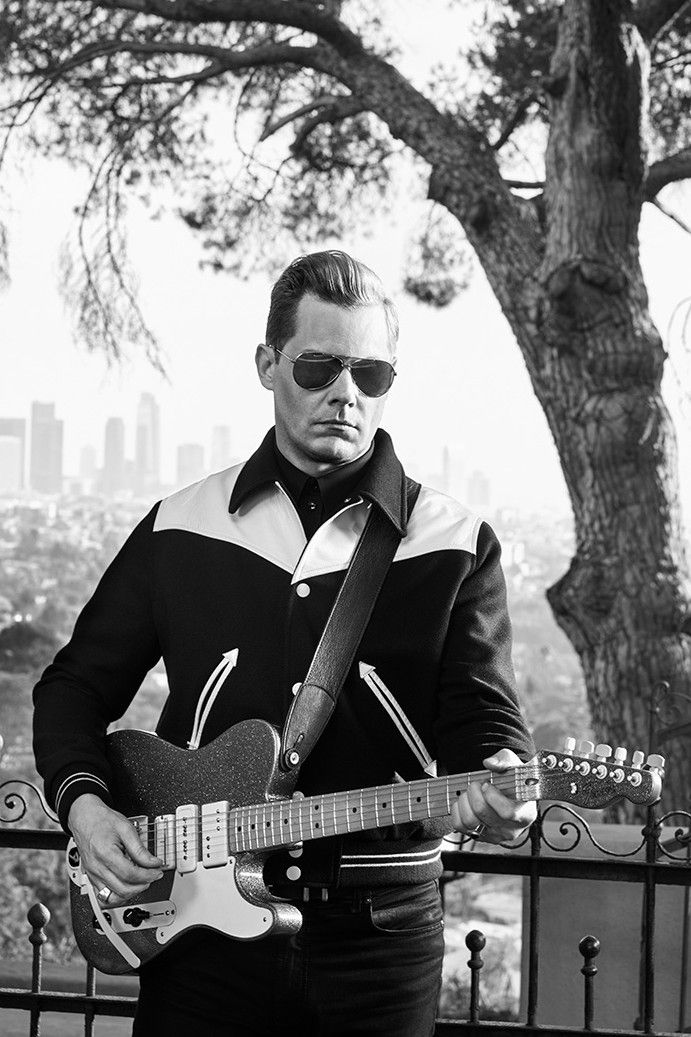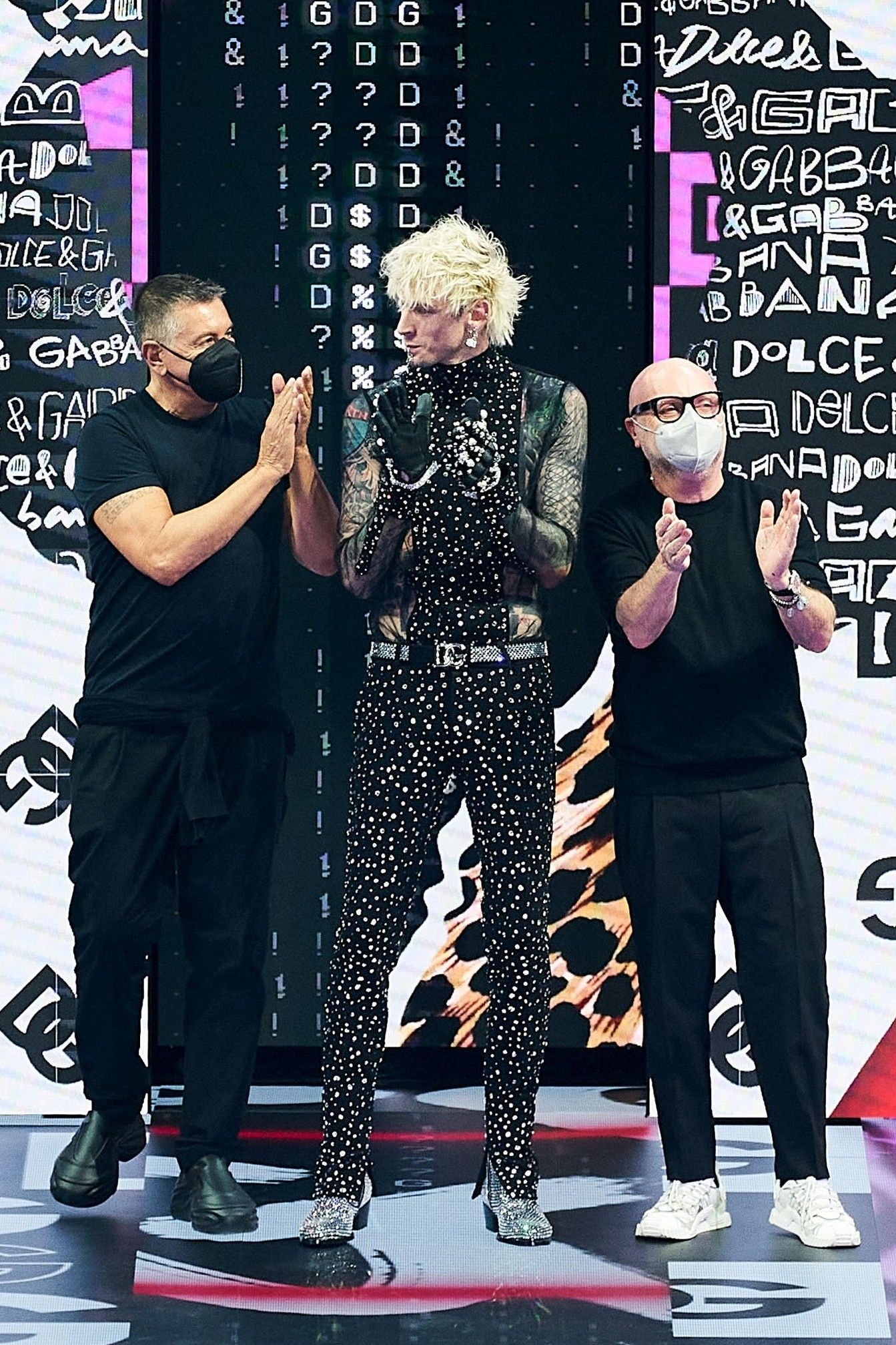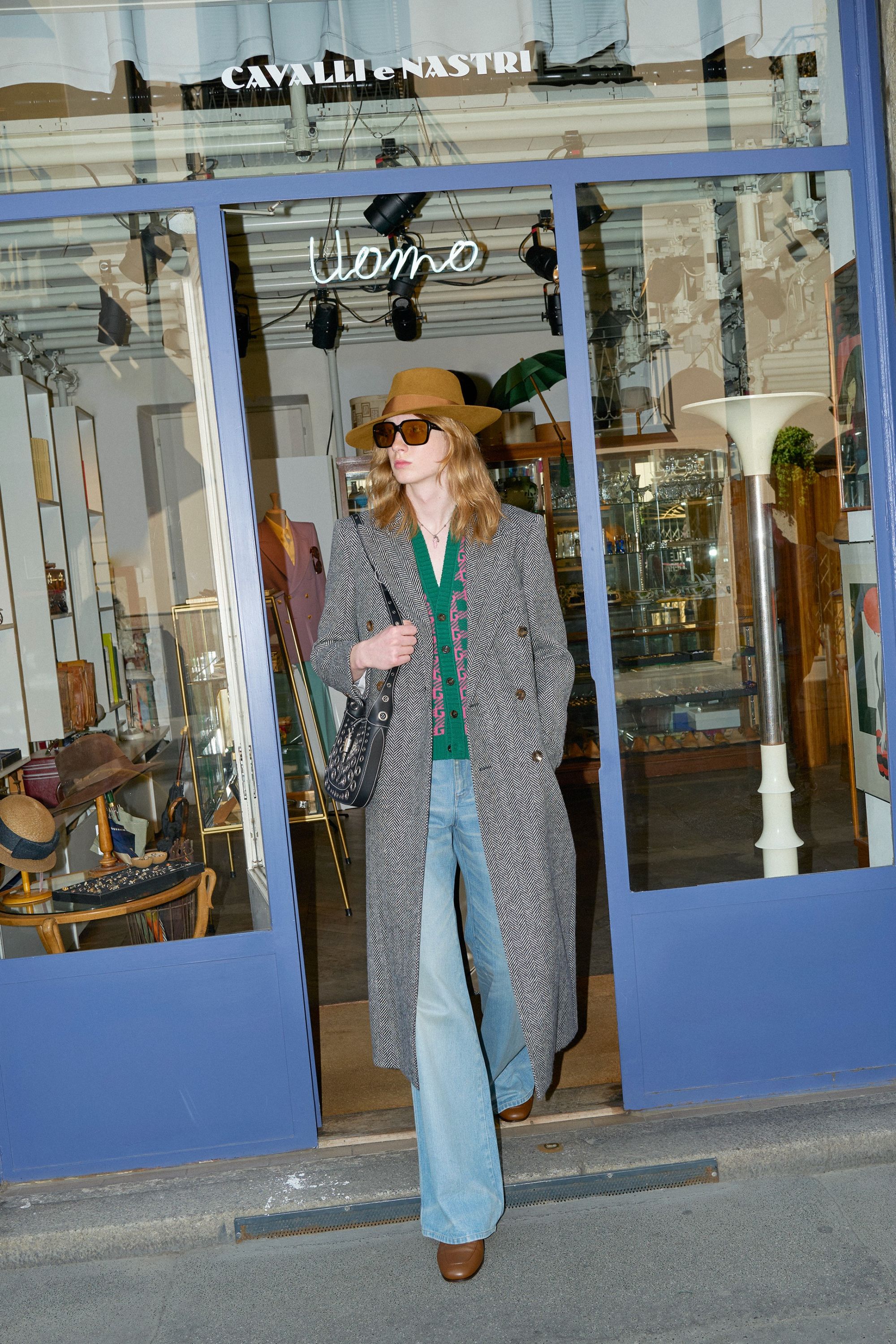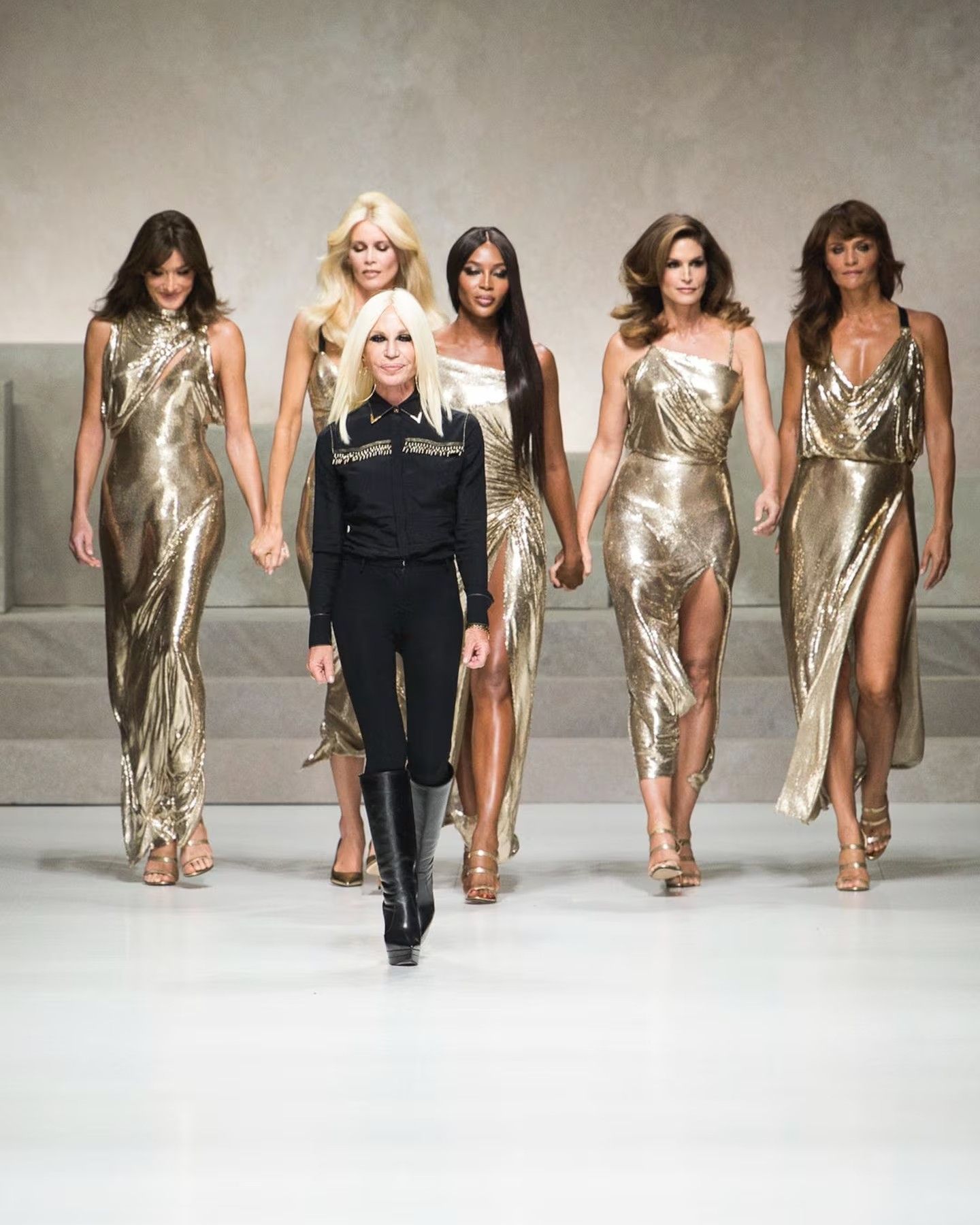
The eternal and contradictory ecstasy of the rock star That is, fashion's strange relationship with what remains of rock
Yesterday, after many months of waiting, Baz Luhrmann's biopic Elvis arrived in Italian theaters. The film's release and success are linked as much to the myth of history's first rock star as to that of his style - a style that, in Luhrmann's film, is almost more bombastic and inflamed than in real life and that has already involved, in the preliminary stages of its release, two fashion heavyweights: Miuccia Prada, who has collaborated with costume designer Catherine Martin to sign the outfits of the film's characters with archival pieces from Prada and Miu Miu revisited for the occasion; and Hedi Slimane, who has begun to dress the film's star Austin Butler at all his events and red carpets, alongside his fiancée, model Kaia Gerber, already one of the faces of Celine and its campaigns. Also in recent days, Hedi Slimane enlisted one of the most iconic rock stars of our time, Jack White, for his Portrait of a Musician series. During the last Milan Fashion Week, on the other hand, Alessandro Michele co-designed the Gucci HA HA HA capsule collection with Harry Styles, who is more of a pop star than a rock star, but whose stylistic kinship with David Bowie (and thus whose rock ancestry) is irrefutable. Add to this the recent tightening of the relationship between Gucci itself and Maneskin and to the presence of the Icelandic rock group Kaleo's music in Emporio Armani's perfume ads, but also to the presence, at Dolce & Gabbana's show last January, of Machine Gun Kelly, who after frequenting the rap scene has recycled himself as a rock star. The question therefore arises: has fashion fallen back in love with the electric guitar?
The simple answer to the above question might be a «Yes». Yet it is peculiar that, to date, rock is not the most popular genre in the world, surpassed by pop, hip-hop and electronica in all its many forms. Certainly, we live in an age in which the distinction of genres is increasingly being annihilated, in which the beats of electronica, the bars of rap, the guitars of rock and the arrangements of pop are no longer isolated in the watertight compartments of the past. Always our age feels a greedy need for charismatic figures, leaders and icons and continues at the same time to depend on those of the past. It has been said in the past few years that rappers are the new rock stars, which is true in that these very figures have become the stars of the world music scenes by catalyzing the charisma of the rock stars of the past, figures now as revered as they are antiquated and unsuited to the times. It is not unusual, by the way, for hip-hop stars to evoke rock imagery in certain looks or performances demonstrating how, in this and many other manifestations of the contemporary zeitgeist, the rock star myth still has a certain grip and significance. After all, it was the world of rock that anticipated so many elements of our contemporary culture: the idea of celebrity, of androgyny, of rebellion against social norms - not to mention the glamour associated with the rock star lifestyle surviving in fashion with Hedi Slimane, Jun Takahashi and Takahiro Miyashita, Vivienne Westwood, Raf Simons, Ann Demeulemeester but also, on the more mundane level of press release language, in the many references to the "rock aesthetic," "rock chic," "punk," or "grunge." Wherever one turns, the reference to rock seems inevitable - even if it always stops only on the surface.
If we love the superficial veneer of rock but not its values, it is because rock, as a culture of pure subversion, has profound problematic and critical aspects that the metaphorical digestive apparatus of contemporary pop culture is no longer able to assimilate. Today, the quality of a public figure is based on the positivity of the message they deliver, the causes they champion, and the example they set for his fans. In short, the rock stars of today could never be the rock stars of the past - both musically and behaviorally. After all, in today's world there is no room for the true, unedited version of the rock star: if today a singer got arrested on stage, was photographed with his nose sunk in cocaine, bedded his groupies and destroyed hotel rooms he would immediately be branded a "toxic personality" or a "dangerous example" as happened in part to Justin Bieber during his post-teenage phase of brawling, car racing and shenanigans of all kinds. The cult of self-destruction and vice with which the rock star figure is habitually associated is no longer socially acceptable today - just think of how some time ago Damiano of Maneskin had to publish his test results after being accused of using drugs. There remains, of the rock star, the passionate, sensual, ambiguous aura but beneath his studded leather jacket, inside his boots and tattered jeans there is no longer a lifestyle. The heirs of the wild and controversial rockstars of the past are figures such as Amy Winehouse, XXXTentacion, Juice Wrld, Lil Peep - all tragic and problematic figures who, however, having passed away at a very young age and often even at the beginning of their mainstream careers (even Amy Winehouse was on her second album at the time of her death) have not become great trans-generational icons capable of defining an era while having left behind their own legacy. They remain, in a word, the flashiest and least aggressive version of rock possible: glam.
Cleansed of its violent and outrageous attitudes, clothed in sequins and androgyny, glam rock represents perhaps the central reference for stylists and editors today, along with the psychedelic scene and the personal style of the likes of Jim Morrison, Mick Jagger, Jimi Hendrix, the Beatles, and so on. The playful glam current, which rejected the incendiary anarchic velleities of earlier rock and embraced the commerciality of mass audiences, rebelled against the rebellion of 1960s rock, throwing itself headlong into the theatricality and polyformism that our times craving ever-new sensory stimuli need. Harry Styles, Maneskin, Baz Luhrmann's Elvis (which is different from the historical one), Machine Gun Kelly and even the scandalous Marilyn Manson are all children, some more and some less, of glam rock.
Specifically with Harry Styles we see the biggest difference between rock stars of today and yesterday: these days a video circulates in which Styles interrupts a concert to find his old schoolteacher in the audience and thanks her on his knees in the midst of the delirious audience - practically an apotheosis of good feelings that shows well what kind of public figure our society has an appetite for. Wholesomeness replaces edginess, adherence to humanitarian causes takes over in place of excesses and profligacy, and even sex, so flaunted by the Maneskin always half-naked, laced in orgiastic poses and covered with S&M straps, never translates into borderline attitude but remains a decoration, a purely performative element that is disposed of, at the end of the concert, along with the stage costumes.
What, then, will remain of the rock star? A pair of pointed boots, black nail polish on the nails, an overpriced leather jacket? Or is rock an attitude, a rebellion? But rebellion against what and whom? The fashion and pop culture world's obsession with rock stars is just proof that, in our society, there is no longer room for those countercultures whose memory we so avidly evoke. Our icons are no longer subversives and seditious people who set guitars on fire on stage but simple good people, kind and tolerant people, maybe even people who stopped smoking during the pandemic and never did drugs or alcohol (or so they say). Yet it was those bad people who over the years provided us with the icons that today's brands mass-produce and resell to us in boutiques under the risky and exciting guise of a pre-packaged, sanitized and, all in all, harmless rebellion. To posterity the arduous judgment.











































